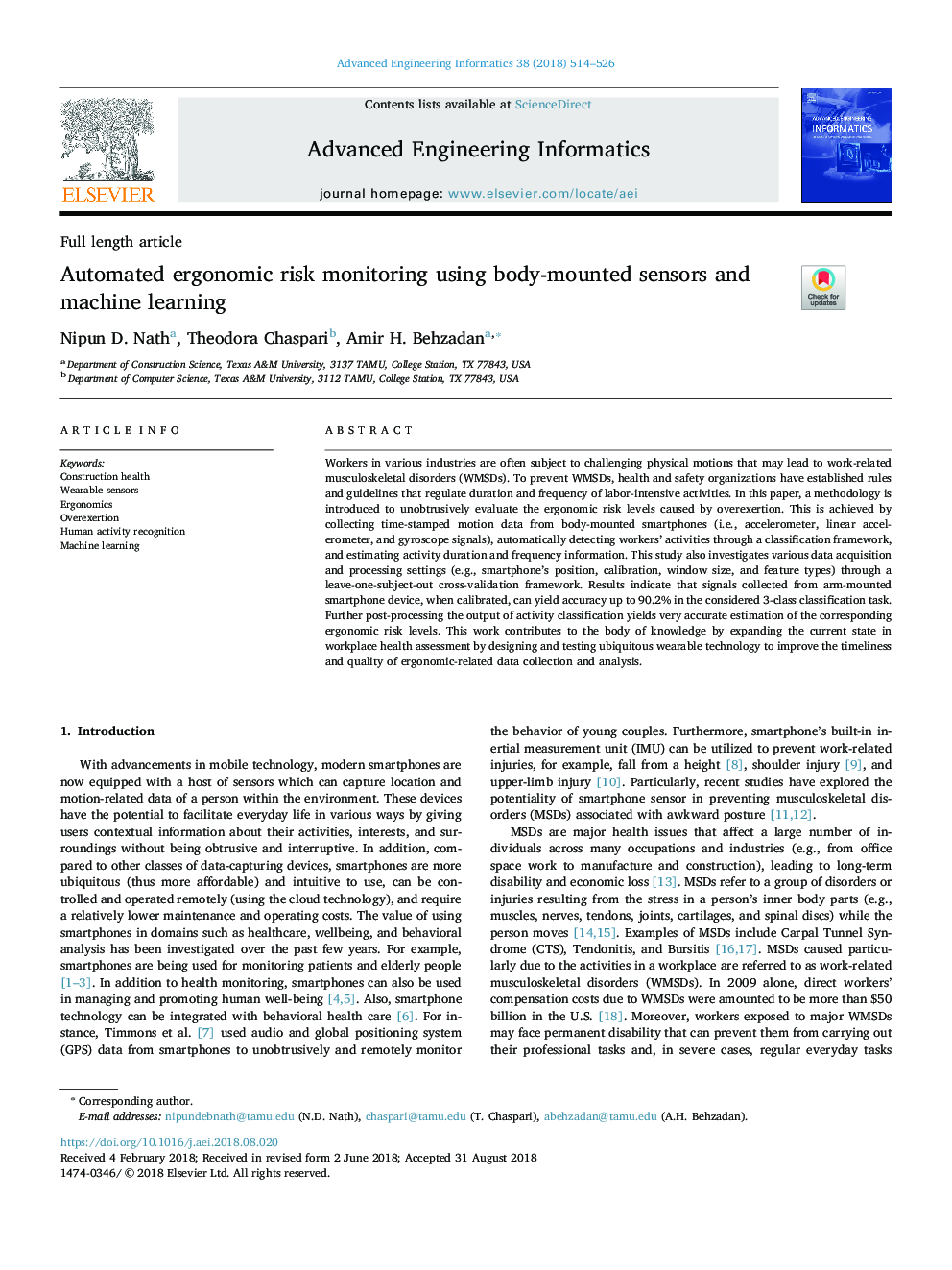| Article ID | Journal | Published Year | Pages | File Type |
|---|---|---|---|---|
| 9951827 | Advanced Engineering Informatics | 2018 | 13 Pages |
Abstract
Workers in various industries are often subject to challenging physical motions that may lead to work-related musculoskeletal disorders (WMSDs). To prevent WMSDs, health and safety organizations have established rules and guidelines that regulate duration and frequency of labor-intensive activities. In this paper, a methodology is introduced to unobtrusively evaluate the ergonomic risk levels caused by overexertion. This is achieved by collecting time-stamped motion data from body-mounted smartphones (i.e., accelerometer, linear accelerometer, and gyroscope signals), automatically detecting workers' activities through a classification framework, and estimating activity duration and frequency information. This study also investigates various data acquisition and processing settings (e.g., smartphone's position, calibration, window size, and feature types) through a leave-one-subject-out cross-validation framework. Results indicate that signals collected from arm-mounted smartphone device, when calibrated, can yield accuracy up to 90.2% in the considered 3-class classification task. Further post-processing the output of activity classification yields very accurate estimation of the corresponding ergonomic risk levels. This work contributes to the body of knowledge by expanding the current state in workplace health assessment by designing and testing ubiquitous wearable technology to improve the timeliness and quality of ergonomic-related data collection and analysis.
Related Topics
Physical Sciences and Engineering
Computer Science
Artificial Intelligence
Authors
Nipun D. Nath, Theodora Chaspari, Amir H. Behzadan,
